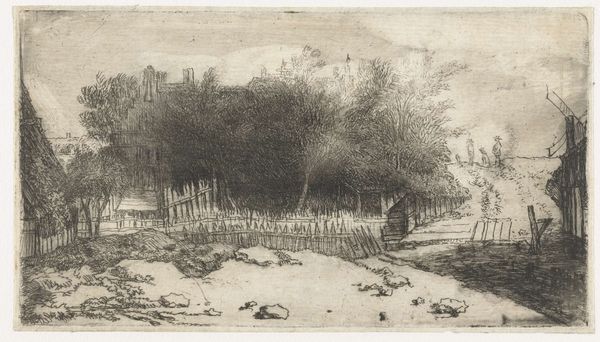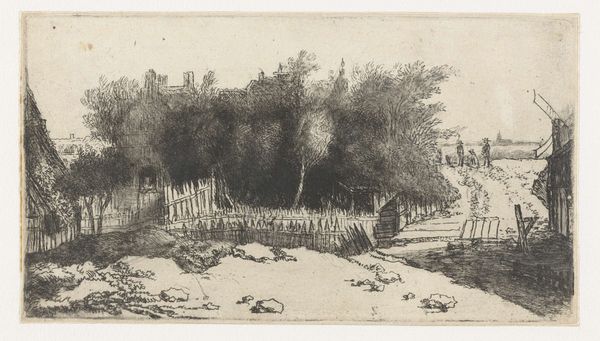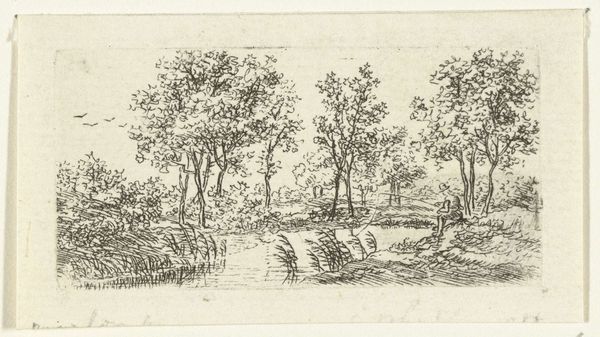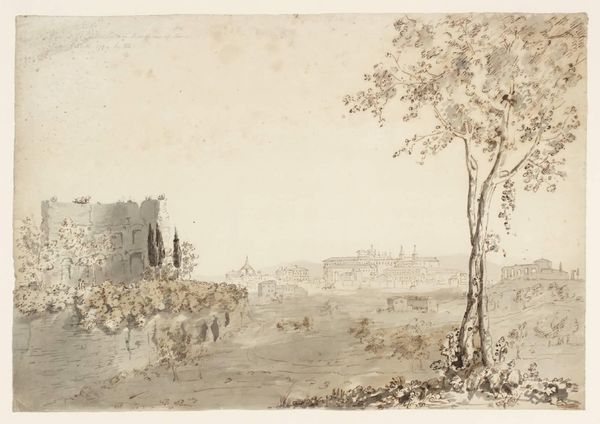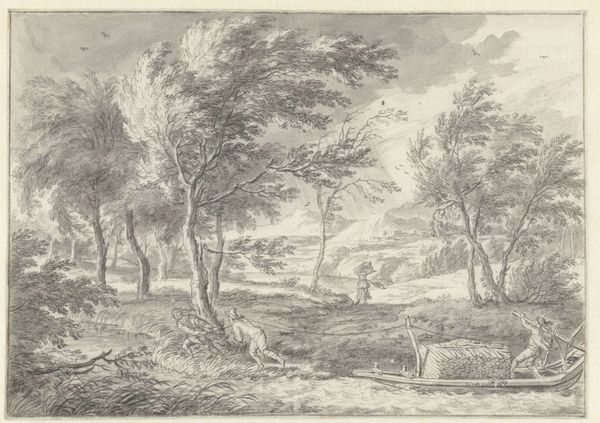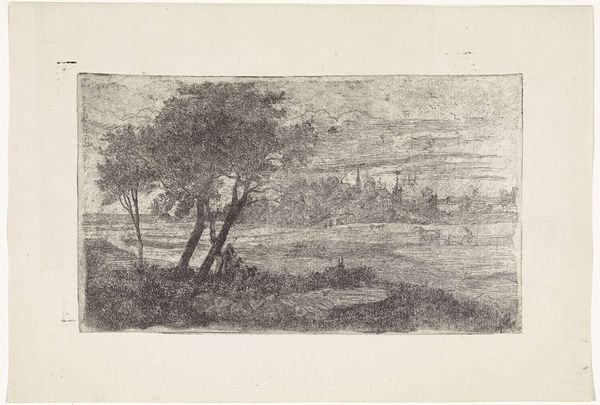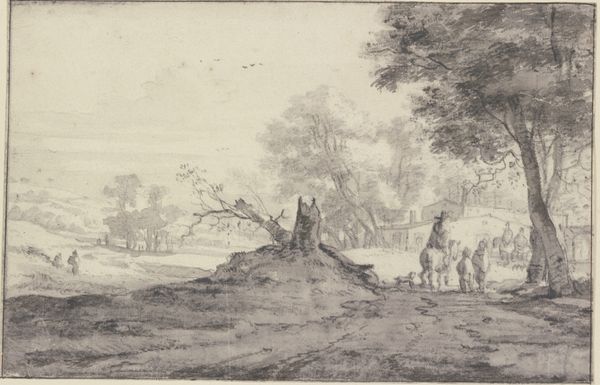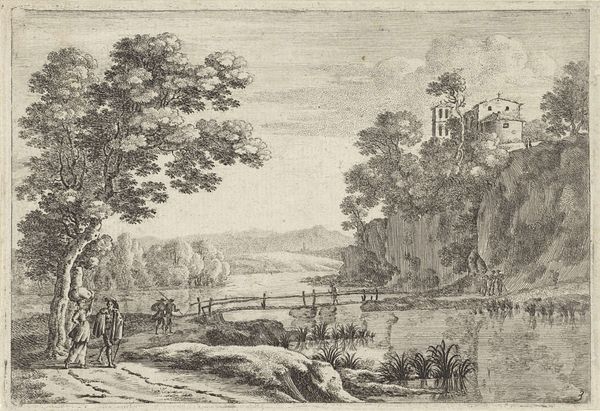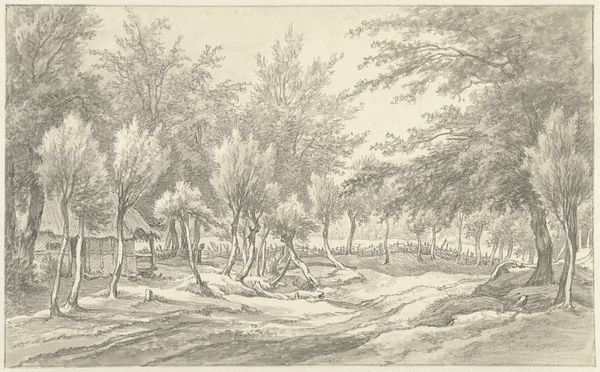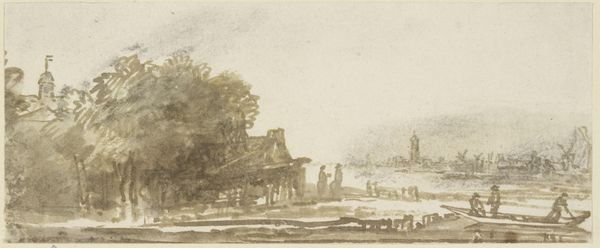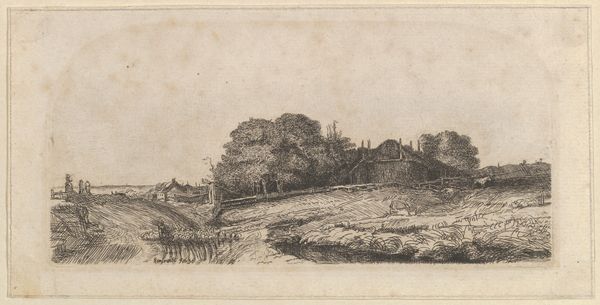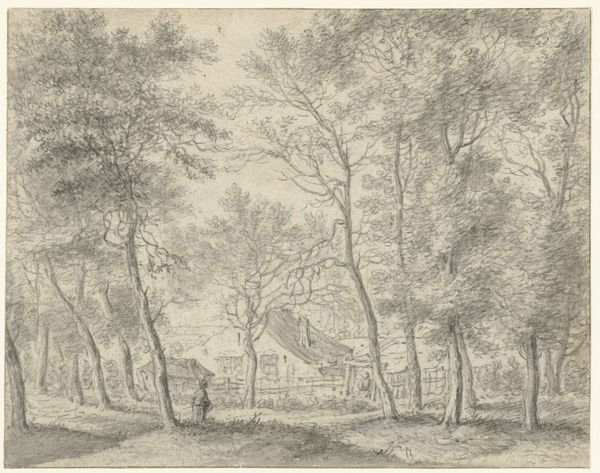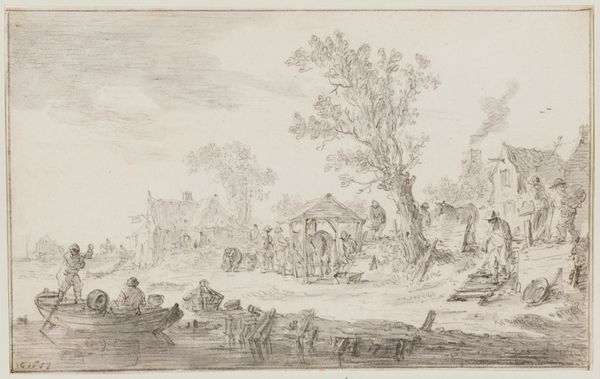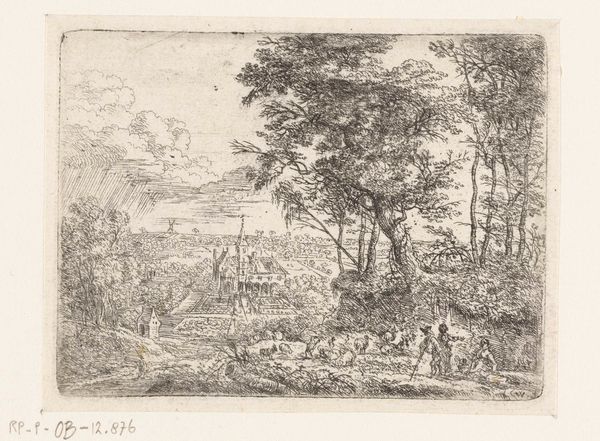
drawing, print, etching, paper
#
drawing
#
dutch-golden-age
# print
#
etching
#
landscape
#
paper
#
realism
Dimensions: height 90 mm, width 162 mm
Copyright: Rijks Museum: Open Domain
Curator: I find myself strangely drawn to the quietude of Philips Koninck's etching, "Landscape with a White Fence," created in 1659. It’s currently housed here at the Rijksmuseum. Editor: Immediately, I get a sense of gentle melancholy. It's like a faded memory, wouldn’t you say? The sparse lines and the muted tones evoke a feeling of transience, of something slipping away. The fence itself almost feels like a barrier, physically and metaphorically. Curator: The Dutch landscape, even in its most modest presentation, always carries an emotional weight, a dialogue with its past. This is a master print in etching, showcasing Koninck’s characteristic wide, panoramic vision shrunk to fit within a relatively intimate frame. Editor: Absolutely, the horizon feels distant yet palpable, and the fence in itself, this mundane structure, turns into a potent symbol of division and longing. The whiteness adds another layer, almost spectral, like a boundary between worlds. I mean, a white fence—it suggests idyllic pastoral life, but here, that idyll feels... slightly haunted. Curator: Considering that this work was created during the Dutch Golden Age, it might reflect some of the anxiety about land and property at the time. A fence marking claimed space can certainly evoke power and exclusion. Yet it is, admittedly, more somber than grandiose. Editor: Precisely, but there are also those figures in the distance by the road—are they a family, a group of travelers? Their presence hints at the journey of life, a pilgrimage viewed through the fence's divide. The white might also recall the “clean slate” idea of renaissance art and philosophy; this land as a new possibility or chapter, yet somehow burdened. Curator: Perhaps Koninck wished to offer not a scene of prosperity or territorial dominance, but rather a reflection on the transience and inherent wistfulness of life in an owned, altered land. Editor: It resonates deeply, yes. These subdued strokes speak volumes about humanity's persistent need to define spaces, all the while hinting that, ultimately, boundaries may not always hold. Fences can feel pretty… arbitrary sometimes. Curator: A stark reminder from a simpler landscape that echoes profoundly through the ages, wouldn't you say? Editor: Agreed, and now I almost find the melancholy comforting in the reminder of change itself, thanks to this conversation.
Comments
No comments
Be the first to comment and join the conversation on the ultimate creative platform.
